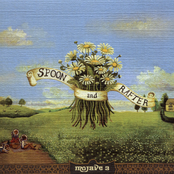David Evans has been busy on a variety of projects lately, and one side-issue occurred just after Christmas when he was offered various plans of the Linley and Winterley limestone mines by historian John Sale via Bill Mayo – and in his inimitable way, David has connected these plans to something that would not have occurred to me: the long-gone Wesley Church in Walsall Wood.
Years ago, I mused that it was constructed from limestone unlike most other local churches, and wondered why. We’re no closer to an answer here, but we have a valid source for the raw material!
I’d like to thank David for yet another wonderful article – an please, if you have anything to add, please do. Either comment here, of mail me – BrownhillsBob at Googlemail for com. Thanks.
David wrote:

It’s very curious that the Wesley Church was built from Limestone rather than the locally abundant bricks. Image from ‘Memories of Old Walsall Wood’ by Bill Mayo and John Sale.
This photo of the old Wesley Church in Walsall Road, Walsall Wood is interesting, not only for the scene of a soup kitchen, but for the building itself . Thanks to the excellent research of Peter Cutler we know that it was opened in 1862 and cost £400.
But the choice of building material, stone, is in itself a mystery because only one year later, 1863, the first Primitive Methodist church opened half a mile away, along the same road, and was built in brick, and was an altogether far more modest simple building as we can see below. It is the small chapel with the round arch windows.
We know that the Wesley chapel was built almost opposite the Travellers Rest pub, which itself lay immediately by the canal, and that the pub lay on the towpath side of the canal.
So, do we have the possibility that the stone was transported by canal. If so, where would the stone have come from?
Perhaps we may have an answer if we travel along the canal, to Daw End in Rushall where there were important limestone workings… adjacent to the canal!
One local limestone mine and its workings have featured on the blog, in the Linley Wood articles, where we read of the use to which the old workings were put during the war.
But to see where the stone for the church may have come from we need to go back in time to the 1860s.

This 1834 map shows lime quarries and workings along Bosty Lane area. Image supplied by David Evans.
These maps and plans show where the Linley limestone mines were.

This 1834 map shows lime quarries and workings along Bosty Lane area. Image supplied try David Evans.

This plan shows Linley Mine in 1857. The adit is a useful point of reference. Image supplied by David Evans.

The Linley Limestone working, Daw End, 1858. Now we see an engine near the entrance of the adit. Image supplied by David Evans.

This plan shows the nearby former Winterley mine. Of interest is the proximity to the canal, the kilns, the dates, and the pillar and stall method of mining used. Image supplied by David Evans.
The canal that runs through Walsall Wood and Brownhills has borne silent witness to the many heavily laden narrowboats passing along over the two centuries or more.
I would like to offer my sincere thanks to John Sale, via Bill Mayo, for offering these amazing old maps and plans and thereby enable another part of our local history to be recorded, and appreciated, and for the ongoing superb research contribution made by Peter Cutler
David,
January 2016




 RSS - Posts
RSS - Posts



David…you need to take a geologist to compare the stone to that in parts of Rushall Church which were of local stone!
The owner of Linley Caverns at the time was Strongitharm and staunch Church of England, so the Dissenters would have had to pay through the nose for their stone!
Hi Pedro
Sadly the little Wesley chapel was demolished some years ago.I do wonder if the original Chapel in Daw End, Rushall ..close to the lime mines,was also a stone building or was it built of brick.
Cheers
David
The Wesley Church, after it closed was later used as a factory by W Hawkins and Son who built and repairerd Church organs there.
The Silurian Limestone was never a good building material. Where it was used another stone was used for the quoins at the corners and the edges of windows and doorways. In this case they have used Triassic sandstone which I think was quarried near Shire Oak. The Wesleyans thought of themselves as being “posher” than the Prims so went to the extra expense of stone.
Most of the limestone quarried was used as a flux in the initial smelting of iron in the Black Country. The Wyrley and Essington Canal Extension was built to the Hay Head quarries (now a nature reserve) via Daw End particularly to carry the limestone, albeit on a circuitous route !
It would be interesting to plot examples of buildings that did use limestone.
Geoffrey Boulton. (Lancaster – formerly Leighswood Aldridge.)
As far as building is concerned HE Green in his book, The Limestone Mines of Walsall says this…..
“Examples of the use of the local stone can be found. Parts of Rushall Church and hall are built from it, there are various farm buildings and old cottages around in which the stone was used. As long as these remain we have evidence of an industry that lasted close on 1000 years..
Where it all began for the Prims
http://www.panoramio.com/photo/110618617?source=wapi&referrer=kh.google.com
Hi Pedro
Mow Cop, Clowes, Bourne and especially Kilham indeed!
primitive Methodism stil going strong in New England.
i have doubts about a stone quarry at Shire Oakor apparent posh aspect of a Wesley chapel that was built before a Prim chapel in Walsall Wood. still find it odd to have a stone chapel….even the Anglican Church in the village is brick!
Cheers
David
Hello David, you mention Mow Cop. My Uncle, John Doody, was a stalwart of Shelfield Methodist Church and after he died back in 2003, I found amongst his belongings a presentation type of cup cup inscribed “Mow Cop…”. I think I handed it over to the church immediately. I often wonder if the cup was of any significance and where it is now. Jonathan Doody.
Hi Jonathon
I knew your uncle well. The Mow Cop cup is significant as it celebrates the founding of the Primitive Methodist movement. Mow Cop is near Stoke on Trent, and a lot has been written about this topic and the local people in this wonderful blog. If ever you are able, visit Engleseabrook museum.(near Alsager) The Prims were the coalmining Methodists..and quite radical in a few ways, bless them!
John Doody was a well respected local man whose wartime army service may one day come to light.
thanks for your comment Jonathon and I send you my best wishes
kind regards
David Evans
Thank you for your reply, David, and your kind words about my Uncle John. By the way, I am a geologist! Kind regards from Jonathan.
Re Lime workings in the Walsall area my ancestor Emmanuel Benton and his father in law Job Hollowood worked the area in 1845. link to page for Walsall history.
I’m sure David Evans will find it interesting.
http://www.british-history.ac.uk/vch/staffs/vol17/pp180-208
lists Walsall Economic history including Limestone.
hI Lynn
Yes indeed!
Many thanks
David
David, i have much more detailed maps of the Linley mines than this.
Your post on this is coming up. Stay tuned.
I needed to clear something up first!
Cheers
Bob
many thanks Bob
Thanks Martin…….look forward to seeing these in due course, if possible…many thanks for your interest and contribution. Most appreciated
kind regards
David
Hi Martin do you still have good maps of Linley? Thanks Mungo